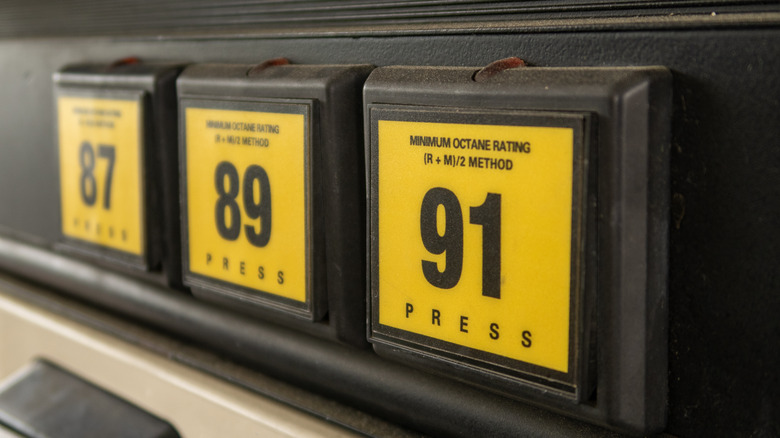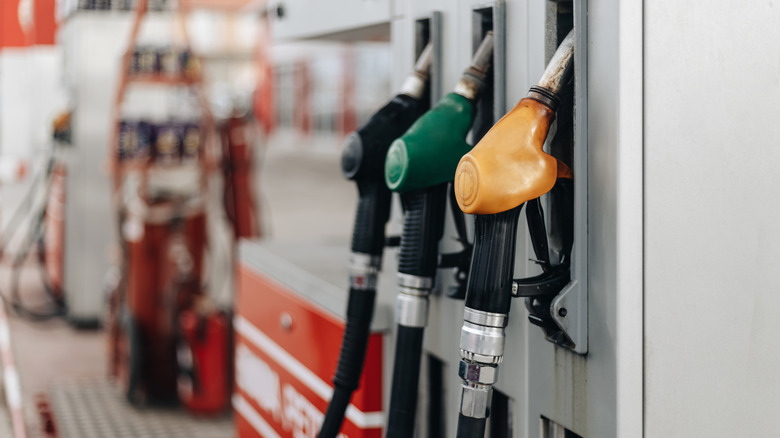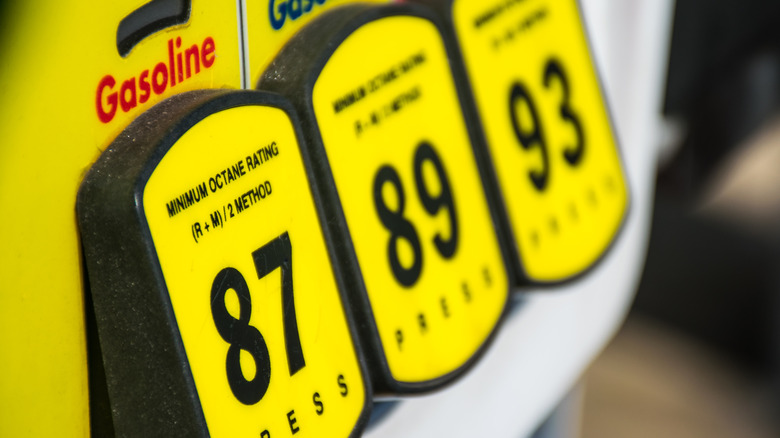
Arne Beruldsen/Shutterstock
Gas stations are well integrated into our daily lives as Americans. Except for residents of NJ, where you don’t have to pump your own, a gas station can be intimidating with its cryptic displays and a dizzying array of fuel options. Every time you roll up to the pumps, you are presented with several variants of gasoline with proprietary names (Shell’s V-Power and Nitro, BP’s Silver and Amoco Ultimate) as well as the standard Regular, Plus, Premium, as well as E5, E10, and ethanol-free, which is a whole other can of worms.
Forgetting the names, you’re sure to encounter numbers like 87, 89, 91, and 93 written on the fuel dispenser, which while seemingly adds to the confusion, actually keeps things consistent. We’ll break down the basics of octane ratings, dispel some common myths, and help you make informed decisions every time you are at the pump for refueling.
And on the way, you will also understand why they are more than just numbers on the fuel dispenser. More importantly, you will also learn how to select the fuel with the optimum octane rating for your car, so you can extract the best possible performance from it. Let us also say at the outset that octane ratings are only applicable to gasoline engines; for diesel engines, the equivalent of octane rating is called a cetane rating.
What is octane rating?

Mladenbalinovac/Getty Images
The octane rating of gasoline is generally considered a measure of quality, but that’s only half the story. A more accurate way of defining octane ratings is that they measure a fuel’s resistance to spontaneous ignition within an engine’s combustion chamber. Think of it as a stability score, where the higher the number, the more controlled the burn is. This controlled burn minimizes unwanted explosions, known as knocking or pinging, that can affect performance and damage engines.
Gasoline engines typically experience knocking when the air/fuel mixture ignites before the plug sparks, resulting in incomplete combustion (and a small shockwave, or knock) that interrupts the natural rhythm of the stroke sequence. This unintentional burn creates a residue that can eventually lead to spots inside the chamber that overheat, leading to more knock, and eventually damaged engine components.
The lower the octane rating of the gasoline, the higher the chances of knocking; as fuel with a higher octane number tends to burn better inside the ignition chamber. This is why the higher the octane rating, the better the fuel is for your engine. In the U.S., regular unleaded gasoline usually has an octane rating of 87, with some pumps at higher altitudes also dispensing 85 octane fuel. Then there is mid-grade gasoline with octane ratings between 89 and 90. These are slightly more expensive than the regular version. At the top of the list is premium gasoline with octane ratings between 91 and 94.
Is higher octane fuel always better?

Roschetzky Photography/Shutterstock
Given what you have read so far, it might make sense to opt for gasoline with the highest octane rating. However, that isn’t really the case. Going beyond the recommended octane rating for your car’s engine will only mean you’re burning more expensive fuel without tangible benefits.
It is crucial, therefore, to refer to your car’s user manual which will almost certainly contain the recommended octane rating best suited for your vehicle. As long as you stick to using the fuel with the recommended octane rating, you’ll avoid the detrimental effects of knocking and optimize your engine’s performance and fuel efficiency. In certain circumstances, a vehicle manufacturer might recommend a lower octane fuel while also acknowledging that a higher octane option may yield modest performance enhancements. In such cases, the use of a higher-octane fuel is entirely acceptable.
If you accidentally put lower-octane fuel in your car, or it’s the only option available, it’s usually okay to use it until you can fill up with the right kind. You can even pull up the rating by topping off with high-octane fuel, as the midgrade fuels are usually a blend anyway. But don’t make a habit of using lower-octane fuel, as it can harm your engine in the long run and might even void your warranty. Ensuring that you tank up with fuel that has the correct octane rating for your car is one of the many ways you can ensure the longevity of the engine.